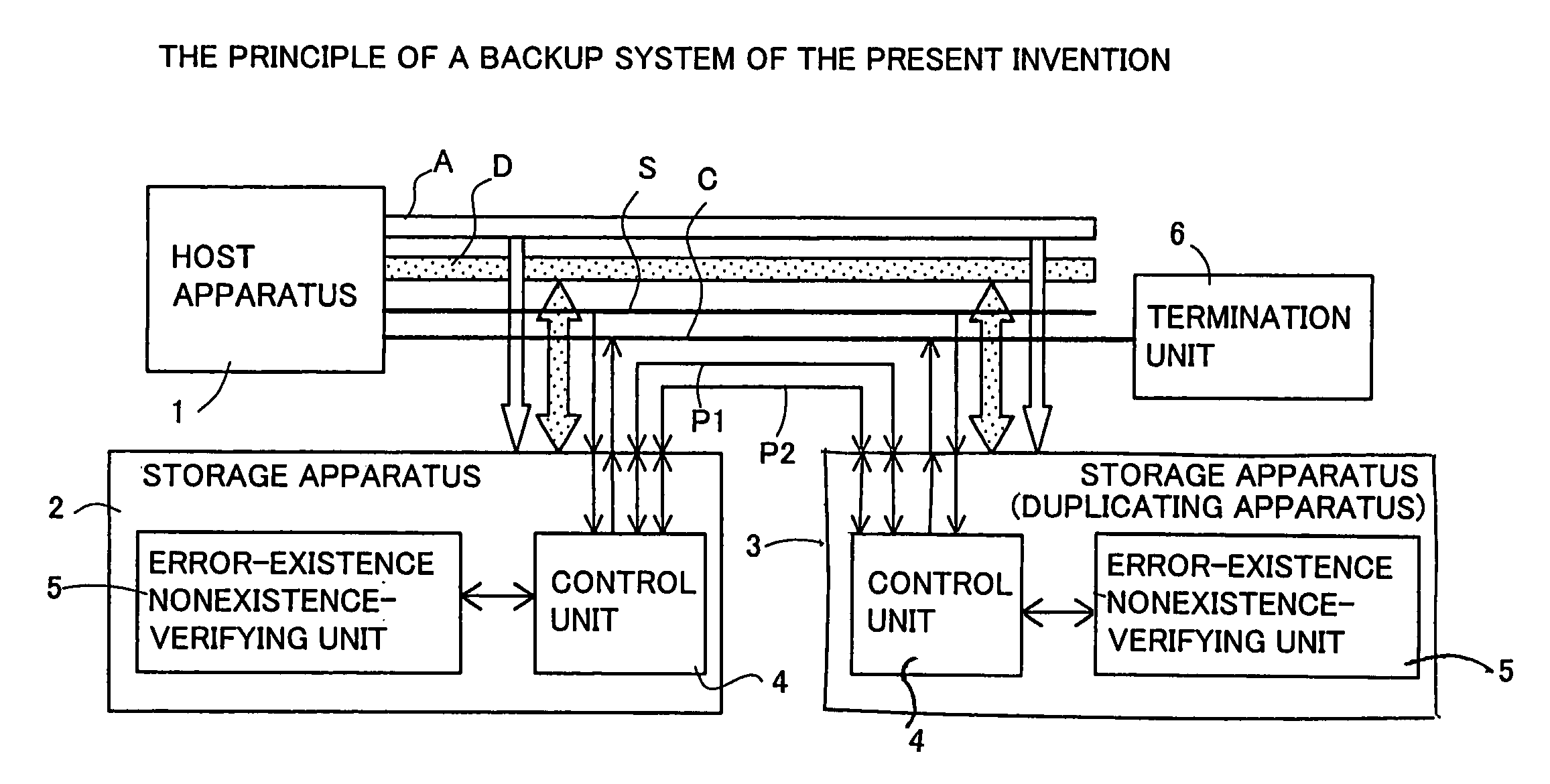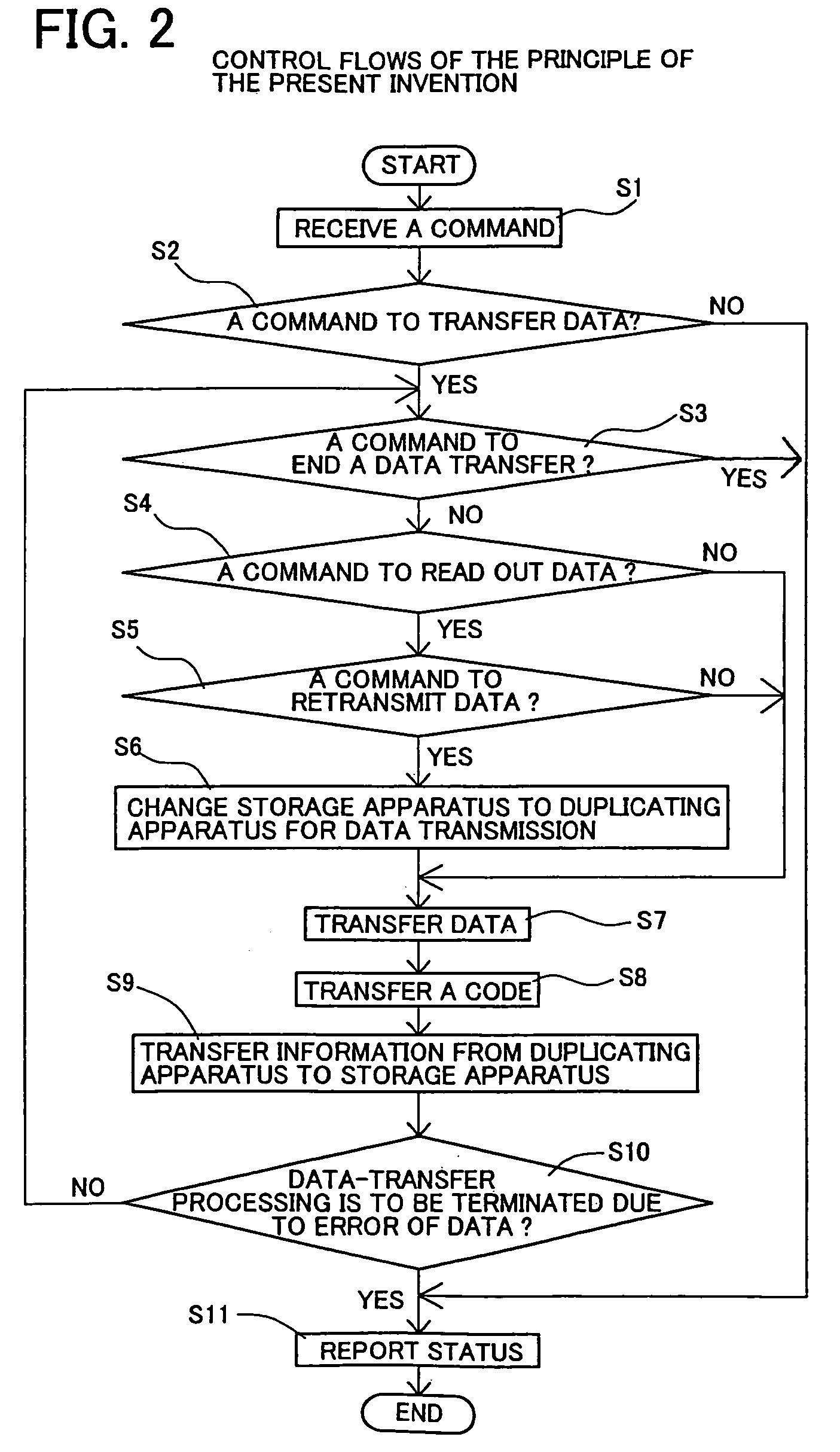Backup system and duplicating apparatus
a backup system and duplication technology, applied in the field of data backup, can solve the problems of sacrificing the availability of the data processing system, unable to ensure the reliability of data written to the backup disc drive, and no verification unit for verifying the accuracy of data storage, so as to and improve the reliability of data transfer.
- Summary
- Abstract
- Description
- Claims
- Application Information
AI Technical Summary
Benefits of technology
Problems solved by technology
Method used
Image
Examples
first embodiment
[0039]In the backup system of first embodiment shown in FIG. 3, the personal computer 11 serving as the host apparatus transfers a signal with the data transfer apparatus by a strobe line 1S1 to inform the data transfer apparatus of whether the current access is an operation to read out data from the data transfer apparatus or an operation to write data into the data transfer apparatus. Data is exchanged between the personal computer 11 and the address of a location in the data transfer apparatus through a data bus 1D. Specified by the personal computer 11, the address appears on an address bus 1A. If necessary, the personal computer 11 uses a strobe line 1S2 typically to issue a command for requesting the data transfer apparatus to receive codes indicating existence or nonexistence of an error calculated by the personal computer 11 to the data transfer apparatus through the data bus 1D.
[0040]The master 12 and the slave 13 are connected to each other by a bi-directional command line...
fourth embodiment
[0057]The error information accumulating unit 158 accumulates only information on an error detected in an operation to output data from the slave 13 itself. The error information accumulating unit 158 can collect an error detection rate for each address in the slave 13 and each data type. In this way, reliability of the backup of each data in the slave 13 can be improved. Particularly, in the case of a multi-slave configuration comprising slaves 431 and 432 like a fourth embodiment to be described later by referring to FIG. 9, error detection rates for the slaves 431 and 432 can be obtained to make the backup system safer and more reliable. The error information accumulating unit 158 functions as an information accumulating unit.
[0058]The switching control unit 159 is a portion serving as a switching control unit for changing the current data transfer apparatus from the master 12 to the slave 13 in the event of an error detected in an operation to transfer data in the master 12. In ...
third embodiment
[0071]It should be noted, however, that components, which are employed in the error verifying unit 35 and the control unit 34 and used for carrying out control functions in the third embodiment, are each implemented software executed by a microprocessor (referred to as an MPU) 343. Thus, by modifying the software executed by the MPU 343, it is possible to provide a backup system capable of keeping up with variations in data-processing-system configuration with a high degree of flexibility.
[0072]In the fourth embodiment of the backup system shown in FIG. 9, the fourth embodiment implements a backup system having a multi-slave configuration in which 2 slaves 431 and 432 are provided for one master 42. In the fourth embodiment, the configurations, the functions and the effects of a personal computer 41, a termination unit 46, a strobe line 4S1, a strobe line 4S2, a control line 4C, an address bus 4A and a data bus 4D are identical with the configurations, the functions and the effects ...
PUM
 Login to View More
Login to View More Abstract
Description
Claims
Application Information
 Login to View More
Login to View More - R&D
- Intellectual Property
- Life Sciences
- Materials
- Tech Scout
- Unparalleled Data Quality
- Higher Quality Content
- 60% Fewer Hallucinations
Browse by: Latest US Patents, China's latest patents, Technical Efficacy Thesaurus, Application Domain, Technology Topic, Popular Technical Reports.
© 2025 PatSnap. All rights reserved.Legal|Privacy policy|Modern Slavery Act Transparency Statement|Sitemap|About US| Contact US: help@patsnap.com



